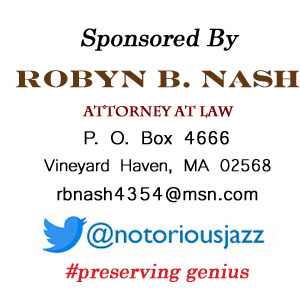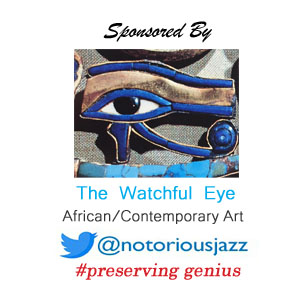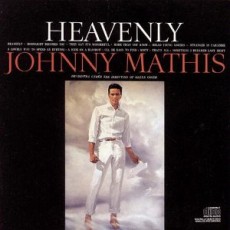
Daily Dose Of Jazz…
Johnny Mathis was born John Royce Mathis in Gilmer, Texas on September 30, 1935. The family moved to San Francisco, California, where he grew up on 32nd Avenue in the Richmond District. His father a vaudevillian, saw his son’s talent, bought a piano and encouraged him by teaching him songs and routines that he performed at home, school and church functions.
At thirteen, Johnny began study with voice teacher Connie Cox, and for six years he learned vocal scales and exercises, voice production, classical and operatic skills. A star athlete in high school he earned four athletic letters, and then enrolled at San Francisco State University on scholarship to become a teacher. However, spotted by Helen Noga, co-owner of The Black Hawk Club at a jam session, she became his manager, got jazz producer George Avakian to hear him and he subsequently sent a telegram to Columbia Records noting: Have found phenomenal 19-year-old boy who could go all the way. Send blank contracts.
The rest, as they say is history. His first album Johnny Mathis: A New Sound In Popular Song was a slow-selling jazz album. Staying in New York to play the clubs, his second album, produced by Mitch Miller, defined his sound – soft, romantic ballads. Miller paired him with arranger/conductor Ray Conniff, then with Ray Ellis, Glenn Osser and Robert Mersey. By 1956 Johnny recorded two of his most popular songs – “Wonderful, Wonderful” and “It’s Not For Me To Say”. He would appear in films by MGM and 20th Century Fox, the Ed Sullivan Show and The Pat Boone Chevy Showroom.
After splitting from Noga, Mathis established Jon Mat Records to produce his recordings, Rojon Productions to handle all of his concert, theater, showroom and television appearances, and all promotional and charitable activities, hired a new manager and business partner, signed with Mercury, then Columbia Records, the latter being his permanent label. His recordings have been used in Close Encounters of the Third Kind, The X-Files and Mad Men; and his discography crosses all genres including jazz, pop, Brazilian, Spanish, Soul, R&B, rock, Broadway, Tin Pan Alley and disco.
He has the distinction of having the longest stay of any recording artist on the Columbia Record label, having been with the label from 1956 to 1963 and from 1968 to the present and makes him the third biggest selling recording artist of the 20th century, only after Elvis Presley and Frank Sinatra.
Johnny Mathis has received three Grammy awards including a Lifetime Achievement Award, has been inducted into the Grammy Hall of Fame, nominated for an Oscar, has taped twelve of his own television specials, made over 300 television guest appearances with 33 of them being on The Tonight Show and his songs have been heard in 100 plus television shows and films around the globe. He continues to perform but from 2000 onwards has limited his concert engagements to fifty to sixty appearances per year.
More Posts: vocal
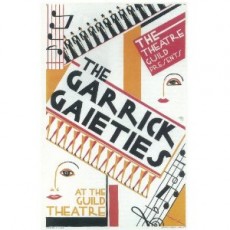
From Broadway To 52nd Street
In the same year, on Sunday, May 15, 1925 the Theatre Guild Revue presented the first of three editions of Garrick Gaities that was mounted for only two performances in an effort to raise funds for new tapestries. The song that stood out to become a jazz favorite was Manhattan, composed by Richard Rodgers and Lorenz Hart.
Comprised of a series of sketches, the opening number, “Soliciting Subscriptions” was a spoof of the Theatre Guild’s “serious pretensions”, Ryskind wrote skits including a satire of President and Mrs. Calvin Coolidge, and a parody of the Scopes Trial, which was dropped from the show after William Jennings Bryant died. Sterling Holloway and June Cochrane introduced the song “Manhattan”, as its easygoing strolling melody and ingeniously rhymed lyric related all of the everyday pleasures to be found in New York.
Jazz History: The first two decades of the twentieth century saw 52nd Street as a quiet, expensive residential thoroughfare with its five-story brown stones that served as town houses for the city’s well-to-do families and social elite. Prohibition was slow to affect this area and by 1925, six years after it’s passage, the Street had its first speakeasy established by Jean Billia in a converted millionaire brownstone to a multiple dwelling.
Sponsored By
www.whatissuitetabu.com
More Posts: broadway
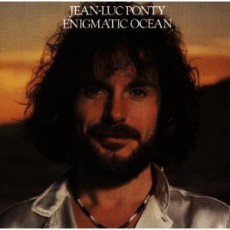
Daily Dose Of Jazz…
Jean-Luc Ponty was born September 29, 1942 in Avranches, France to parents who taught and played violin, piano and clarinet. At sixteen, he was admitted to the Conservatoire National Supérieur de Musique de Paris, graduating two years later with the institution’s highest award, Premier Prix. He was immediately hired by one of the major symphony orchestras, Concerts Lamoureux, where he played for three years.
While still a member of the orchestra in Paris, Ponty picked up a side gig playing clarinet for a college jazz band that regularly performed at local parties. This life-changing jumping-off point sparked an interest in the jazz sounds of Miles Davis and John Coltrane, compelling him to take up the tenor saxophone. After a night in a local club with his violin it only took four years to be widely accepted as the leading figure in jazz fiddle.
Adopting the electric violin was at first proved to be a handicap as few at the time viewed the instrument as having no legitimate place in the modern jazz vocabulary. With a powerful sound that eschewed vibrato, Jean-Luc distinguished himself with be-bop era phrasings and a punchy style, that by 1964, at age 22, he released his debut solo album for Philips, Jazz Long Playing. He would go on to record with violin greats like Stephane Grappelli and Stuff Smith, perform at Monterey in 1967 with John Lewis, snag a recording contract and work with Gerald Wilson Big Band, the George Duke Trio and Niels-Henning Orsted Pederson.
In 1969, Frank Zappa composed the music for Jean-Luc’s solo album King Kong; in 1972 Elton John collaborated with Ponty on Honky Chateau, and within a year emigrated to America, making his home in Los Angeles, California. He worked with John McLaughlin Mahavishnu Orchestra, and in 1975 signed with Atlantic Records. For the next decade, Jean-Luc toured the world repeatedly and recorded 12 consecutive albums which all reached the top 5 on the Billboard Jazz charts.
Over the course of his prolific career, violinist Jena-Luc Ponty has performed with the Pittsburgh New Music Ensemble, Radio City Orchestra, with symphonies around the world, Al Di Meola, Stanley Clarke, a host of American and African musicians, collaborated with his pianist daughter Clara on several project, joined the 4th incarnation of Return To Forever in 2011 and continues perform, tour and record, adding to his more than four dozen album catalogue.
More Posts: violin
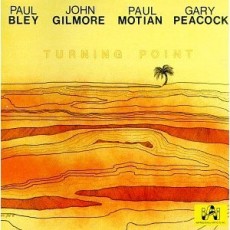
Daily Dose Of Jazz…
John Gilmore was born on September 28, 1931 and grew up in Chicago, Illinois but didn’t start playing the clarinet until age 14. While in the Air Force in the late Forties he took up the saxophone, then pursued a musical career, playing briefly with pianist Earl Hines before encountering Sun Ra in 1953.
For the next four decades, Gilmore recorded and performed almost exclusively with Sun Ra. Thought to have the makings of stardom like Rollins or Coltrane, the latter taking informal lessons from Gilmore in the late 50s and partially inspired by his sound on “Chasin’ The Trane”.
By 1957 he was co-leading a Blue Note date with Clifford Jordan titled Blowing In From Chicago, that is regarded as a hard bop classic with Horace Silver, Curley Russell and Art Blakey. In the mid-1960s John toured with the Jazz Messengers, participated in recording sessions with Paul Bley, Andrew Hill, Pete LaRoca, McCoy Tyner and a handful of others. In 1970 he co-led a recording with Jamaican trumpeter Dizzy Reece, however his main focus throughout remained with the Sun Ra Arkestra.
Gilmore was devoted to Sun Ra’s use of harmony, which he considered both unique and a logical extension of bebop. He was the Arkestra’s leading sideman and soloist, performing with fluency and tone on straight-ahead post bop sessions and abstractly capable of long passages based exclusively on high-register squeals. Though his fame was shrouded in the relative anonymity as a member of Sun Ra’s Arkestra, he led the band after Ra’s death up until his own passing of emphysema in 1995.
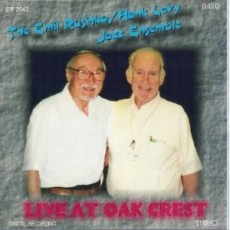
Daily Dose Of Jazz…
Hank Levy was born Henry Jacob Levy on September 27, 1927 in Baltimore, Maryland. He learned to play the saxophone and matriculated through Catholic University studying composition with George Thaddeus Jones. It was here that he became interested in odd meters through their use by such composers as Paul Hindemith, Maurice Ravel and Igor Stravinsky. An adept composer of counterpoint, his talent can be heard in such compositions as Passacaglia and Fugue and Quintessence among others for both the Don Ellis Orchestra and Stan Kenton.
Levy was also prolific as an arranger of jazz standards, though few of them were published during his lifetime. He was especially fond of the music of the stage as it came through bebop: Cole Porter, George Gershwin and Jerome Kern. In his last years, he more frequently turned to bebop originals by Charlie Parker, Dizzy Gillespie and Tadd Dameron.
As an educator Hank was a full-time professor at Towson State University in 1967. He founded and directed for nearly a quarter of a century the Jazz Program and created the “Towson State Jazz Ensemble”. By 1970 he had brought the band to national prominence winning the outstanding band honors at the prestigious Notre Dame Jazz Festival, with and additional honor of “Best Lead Trumpet”.
Levy recorded an album in 1975 with the ensemble titled “2 + 2 = 5” comprised of six of his compositions. The “Hank Levy Legacy Band” currently performs his music, they have recorded two live CDs to date, and several of his works are still in print through various distributors. Saxophonist, composer and arranger Hank Levy passed away on September 18, 2001 in Parkville, Maryland.




